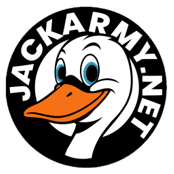Much talk is made these days about the profit and sustainability rules that impact all clubs within the EFL It became a big talking point last weekend when Snoop Dogg was used to promote the upcoming kit launch – a kit that will go on sale this morning. But what are these rules and how do the Swans stick within them? We asked Jack Bot to take a look…
At their core, the P&S rules aim to limit the losses a club can incur over a specified period. For Championship clubs, the current regulations permit a maximum aggregate loss of £41.5 million over a three-year rolling assessment period. This threshold was recently increased from £39 million. It’s crucial to understand that this isn’t just about accounting losses; certain expenditures are “added back” to a club’s reported profit or loss to arrive at an “Adjusted Earnings Before Tax” figure for P&S purposes.
The assessment period is continuous, meaning that when a new financial year concludes, the oldest year in the three-year cycle drops off, and the new year is added. This provides a dynamic view of a club’s financial performance.
Key components of the P&S calculation include:
- Adjusted Earnings Before Tax: This is the primary metric. It takes a club’s pre-tax profit or loss and then makes specific adjustments.
- Three-Year Rolling Period: As mentioned, compliance is assessed over three seasons. This allows for some fluctuation year-on-year but prevents sustained, unsustainable spending.
- Owner Funding: While clubs are generally encouraged to be self-sufficient, owners are permitted to inject capital (equity) to cover losses. However, there are limits to how much owner-funded debt can be included within the allowable loss threshold. Specifically, for Championship clubs, the maximum loss limit is £13 million per season if the owner does not inject equity to cover losses. This implies that owners can cover a significant portion of losses beyond the £13m per season, but this is still capped within the overall three-year £41.5m limit.

What Falls Outside of the P&S Rules (Exemptions)?
Not all expenditure counts towards the P&S calculations in the same way. The EFL, like UEFA with its Financial Fair Play (FFP) rules, recognises that certain investments are beneficial for the long-term health of football and therefore allows for “add-backs” or exemptions. These typically include:
- Youth Development Expenditure (Academy Costs): Investing in a club’s academy is seen as vital for producing homegrown talent, benefiting both the club and the wider football pyramid. Costs associated with youth development, including coaching, facilities, and education, are generally excluded from the P&S calculation.
- Women’s Football Expenditure: The growth of women’s football is a strategic priority, and clubs are encouraged to invest in their women’s teams. These costs are often exempt.
- Community Development Expenditure: Clubs play a crucial role in their local communities. Expenditure on community initiatives and charitable work is also typically excluded.
- Infrastructure Investment: Costs related to improving stadium facilities, training grounds, and other essential infrastructure are often allowed as add-backs. This encourages clubs to enhance their assets rather than just spending on immediate playing squad costs.
- Depreciation and Amortisation (with a caveat): While depreciation of tangible fixed assets and amortisation of goodwill and other intangible assets (excluding player registrations) are often added back, the amortisation of player registration costs is included in the P&S calculation as a cost. This is a crucial distinction. When a player is signed for a fee, that cost is spread over the length of their contract (amortisation). This annual amortisation charge counts as an expense.
- Profit on Player Sales: Profits generated from selling players are a significant factor in P&S calculations. If a player is sold for more than their “book value” (original transfer fee minus accumulated amortisation), the profit is immediately accounted for and helps to offset losses. This incentivises clubs to develop and sell players.
Challenges for a Club Like Swansea City
Swansea City, like many clubs operating in the Championship, faces significant challenges in adhering to the P&S rules.
- Revenue Generation in the Championship: The Championship is a competitive league with significantly lower broadcast revenues compared to the Premier League. This creates a substantial gap in income for clubs that have experienced relegation, even with parachute payments. Swansea City benefited from parachute payments after their Premier League relegation, but these payments reduce over time and eventually cease, putting increased pressure on revenue generation. Turnover for Swansea was £21.5m for the eleven months ended June 30, 2024, a figure that highlights the financial realities of the Championship.
- Wage Bill vs. Revenue: Player wages are typically a club’s largest expenditure. Maintaining a competitive squad in the Championship often necessitates a high wage bill, which can quickly push a club towards or over the P&S limits if not balanced by sufficient income.
- Reliance on Player Sales: Given the revenue constraints, clubs like Swansea often become reliant on player sales to balance the books and generate profit for P&S purposes. The £10.5m profit from player trading in the financial period ending June 30, 2024, including the sale of Joel Piroe, was crucial for Swansea to remain compliant. This creates a “sell-to-survive” model, where key players might need to be offloaded even if it impacts on-field performance, presenting a dilemma for club management and fans.
- Operational Costs: Running a club, including stadium maintenance, training facilities, and staff wages, involves substantial operational expenses. Swansea’s operational expenses increased to £47.0m for the eleven-month period ending June 30, 2024, highlighting this challenge.
- Investment vs. Compliance: Clubs want to invest in their squads to achieve promotion, but this ambition must be carefully balanced with P&S compliance. Striking the right balance between necessary expenditure for competitiveness and avoiding financial penalties is a constant tightrope walk.
- Owner Support: While owner funding can help, there are limits to its impact on P&S. The ownership group’s continued support is vital for Swansea, with substantial share issues (£16.5m in the period ending June 2024, and a further £21.0m subsequently) demonstrating this reliance. However, this primarily covers operational losses and doesn’t directly improve the P&S calculation in the same way as, for instance, profitable player sales.
Is Swansea City Close to Breaching the P&S Rules?
Based on recent financial statements, Swansea City has publicly stated that they remain compliant with the EFL Profitability and Sustainability regulations.
For the eleven-month period ended June 30, 2024, Swansea reported a pre-tax loss of £15.2m, an improvement on the £17.9m loss from the previous financial year. Crucially, the £10.5m profit generated from player trading, which included the initial profit from the sale of Joel Piroe, was instrumental in ensuring this compliance.
While the club acknowledges the “magnitude of the operational loss” due to the competitive Championship environment and “significant and growing” costs of operating their stadium and training facilities, the focus remains on “achieving operational efficiencies” and reliance on the ownership group.
The fact that player sales were so vital to compliance in the last reported period suggests that while currently within the rules, Swansea’s financial position requires careful management. Continuous significant losses without corresponding player sales would undoubtedly put them at risk. The recent shift in transfer strategy, focusing on sensible and well-planned recruitment with an eye on potential outgoings, further indicates a conscious effort to navigate these financial constraints.
In conclusion, the EFL’s Profit and Sustainability Rules are a critical framework aimed at fostering financial stability in English football. For clubs like Swansea City, they present a complex challenge, necessitating a delicate balance between on-field ambition and off-field fiscal responsibility. While the Swans have thus far managed to stay within the permitted loss thresholds, their continued reliance on player trading profits underscores the ever-present pressure to maintain financial prudence in the demanding landscape of the Championship.
This article first appeared on JACKARMY.net.


1 reply
Loading new replies...
Roger Freestone
Join the full discussion at the Welcome to the Lord Bony Stand →